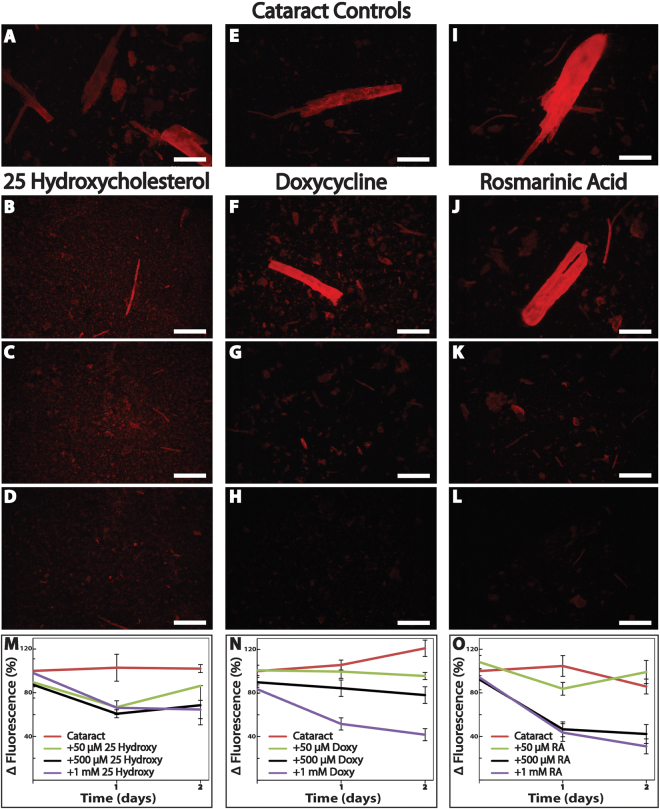Figure 5.
Doxycycline and rosmarinic acid disassemble the amyloidogenic portion of human cataract ex vivo in a better manner than 25-hydroxycholesterol. Fluorescence microscopy images of cataract particles in 10% DMSO (A–D) or pure BSS (E–L), in the absence (A,E,I) or presence of increasing concentrations (50, 500 μM, and 1 mM) of 25-hydroxycholesterol (B–D), doxycycline (F–H), or rosmarinic acid (J–L). Fluorescence microscopy images were taken one day after the addition of the Congo Red reagent (Excitation and emission wavelength of 540/25 nm and 605/55 nm, respectively). Scale bars, 500 µm. Representative images of five experiments shown. ThT fluorescence kinetics of dispersed cataract in the absence or presence of increasing concentrations of 25-hydroxycholesterol (M), doxycycline (N), or rosmarinic acid (O) were carried out. ThT fluorescence was measured daily for two days and relative fluorescence values are shown. 25-hydroxycholestreol (M, 1 mM; n = 7, *P < 0.001), doxycycline (N, 1 mM; n = 10, **P = 0.01), and rosmarinic acid (O, 500 µM; n = 10, **P < 0.001, 1 mM; n = 10, ***P < 0.001) reduced cataract turbidity in a dose-dependent and significant manner.

